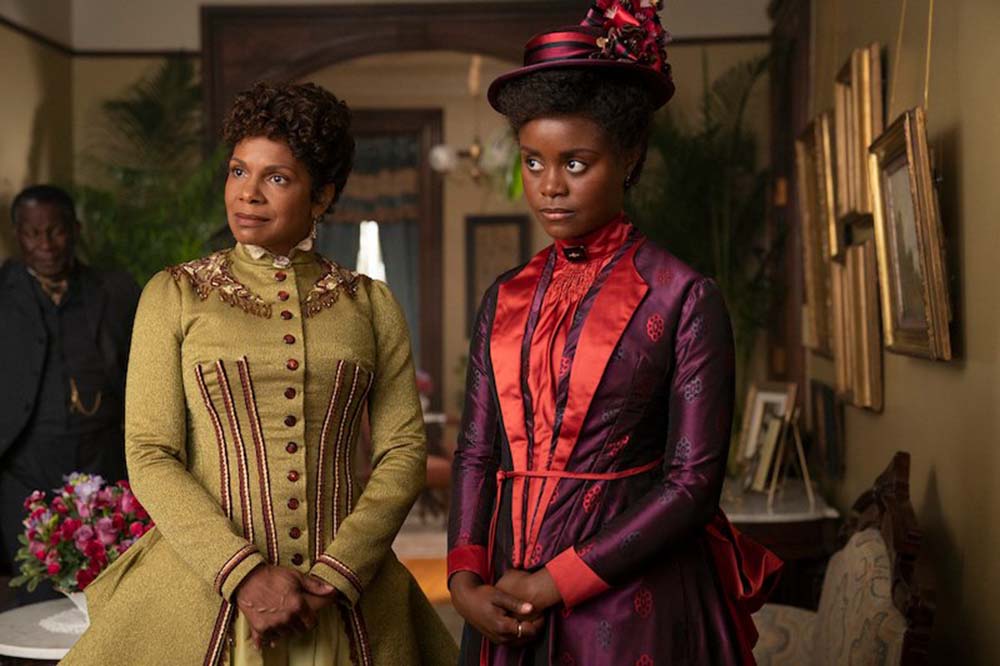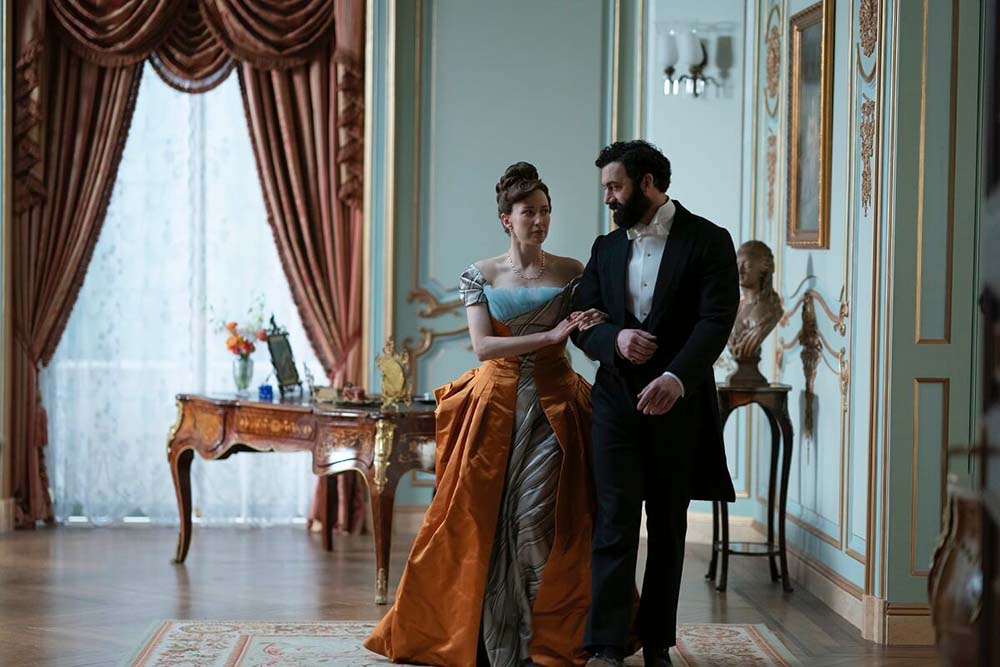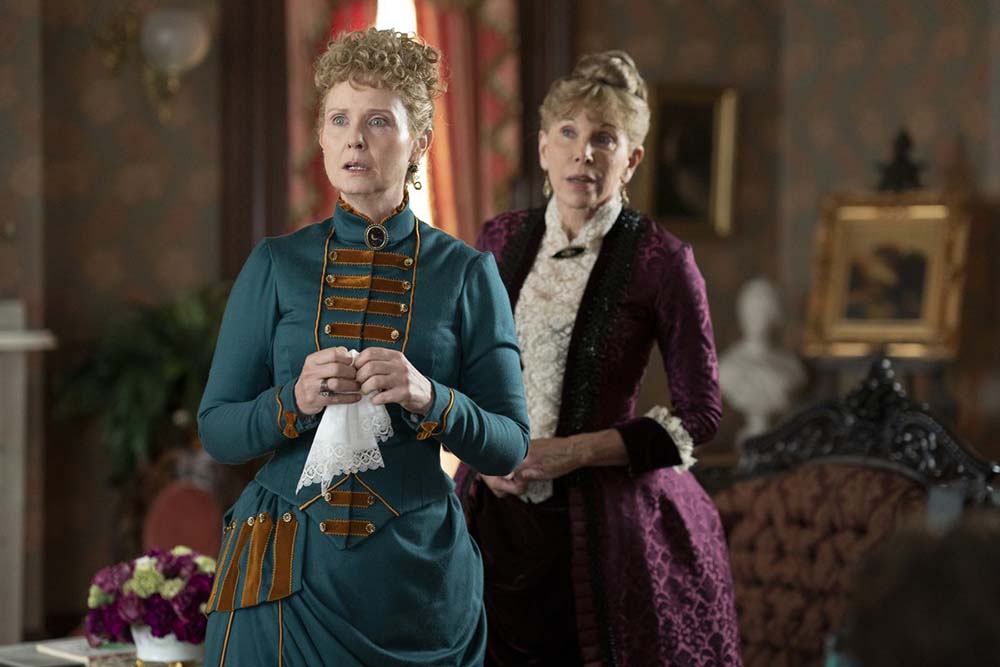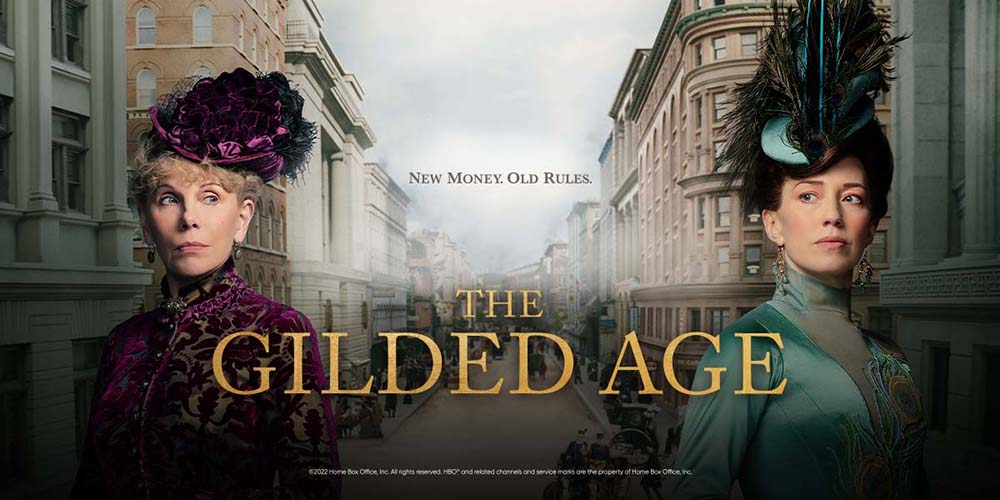It’s the 1880s in America. A young lady from a good family, Marian Brook (played by Louisa Jacobson, Meryl Streep’s daughter), is left destitute after her father’s passing, and the only option left for her is a move to the big city, where her rich aunts, Agnes Van Rhijn and Ada Brook, live in the lap of good society. On the way there, she meets another young lady, Peggy Scott, who is also looking for a means of respectable livelihood and better opportunities. A sort of camaraderie emerges between the women as they enter a new city—New York, no less—and a new phase of their lives.
Sounds like a good period drama, right? And once you know that the creator of this one is the very person who brought us a biggie like Downton Abbey, your hopes from the new HBO show called The Gilded Age really shoot up further. The differences between Julian Fellowes’ last big project—which became so globally popular that even a sequel movie was made—and the current one, however, are what make The Gilded Age even better. What are these? And why is The Gilded Age worth your watch? Let’s find out.
Real Representation Across Races And Classes
One of the biggest criticisms of Downton Abbey was the fact that it wasn’t truly representational when it came to race. The Gilded Age remedies that right at the offset by making Peggy (played beautifully by Denee Benton) a key character—and not just as a bit of tokenism, but as a woman who actually faces everything from casual sexism and racism to barriers to her career as a writer. What’s more, we get a glimpse of the background she comes from, which gives us further insight into an unexplored area on screen: the lives of well-to-do African-Americans who own homes and businesses in Brooklyn and are in no mood to remain second-class citizens in a country dominated by white men and old money.

While Manhattan has always been known to be dominated by the richest white men and women, very few of us know about the parallel movement in Brooklyn, headlined by African-Americans. What’s more, we know very little about the class struggle that goes on in New York even today, let alone the kind that went down in the 1880s. This was the time when entrepreneurs and businessmen from erstwhile poor or modest families, like the Rockefellers and the Vanderbilts, gained prominence in trade circles and had to contend with families that held old money and all the power.

This struggle is aptly represented through the Russells in The Gilded Age. While George Russell (Morgan Spector) comes up against the Old New York establishment while expanding his railway empire, Bertha Russell (Carrie Coon) takes the feminine politics over charity, balls and socialisation head on—bringing her constantly in conflict with Agnes Van Rhijn (Christine Baranski), Marian’s aunt, and other society women who simply don’t want any upstarts ruining their “perfect” society. And that brings us to the other feature of The Gilded Age that will definitely make you fall in love with the show.
A World For Women, Run By Women
The main creator credits for The Gilded Age might belong to Fellowes, but the plot is largely based on the novels by Edith Wharton, an American novelist who wrote extensively about upper-class New York through the insider knowledge she had. And that’s not the only thing that gives the women in The Gilded Age their very realistic, if somewhat dramatic, roles. Dr Erica Armstrong Dunbar is the co-executive producer and the main historical consultant on the show. As a historian who has worked extensively on the lives of African-American women of the 19th century for over 20 years, her expertise shines through the nuances of the women’s lives on the show.

For example, while the somewhat rebellious Marian befriends Peggy and treats her almost like an equal (if not someone better, driven by her ambition and passion for a career in journalism), the Irish maid and white American housekeeper at the Van Rhijns’ household view Peggy with racist and classist suspicion. Similarly, the suspicion and adamant disdain with which the Old New York women view Bertha Russell and her daughter—as well as the disparaging remarks they constantly make about these women and their character—show the very real rivalries that lead to women facing obstacles in society.
And yet, The Gilded Age gives the prospect of feminine camaraderie and sisterhood a good chance—through the friendship that emerges between Marian and Peggy; the unexpected understanding between Marian, Peggy and the women staffers at the Van Rhijn home; the alliance that exists between Marian and her aunts (especially Ada, played by Cynthia Nixon) despite all their disagreements; the possibility of a coalition between Marian, Bertha and Gladys Russell; and the Old New York ties between all the women, led by a certain Mrs Astor (based largely on the very real New York socialite, Caroline Astor).

There is so much going on in this show just among the women, and in the absence of the men, that it passes the Bechdel test with flying colours. But that doesn’t mean that the men aren’t interesting or living with their own traumas. The show features the rising tycoon that George Russell is, the aspiring Philadelphia lawyer, Thomas Raikes (who Aunt Agnes views as an interloper), the Van Rhijn heir, Oscar, who is engaged in a clandestine relationship with another man, butlers, footmen and valets whose nature ranges from narcissistic to humble to understanding, and of course, Peggy’s father, who manages to capture the body language of African-American men even at a time as far back as the 1880s.
Yes, this show has a lot to offer indeed. With a total of nine episodes in this season, any woman can choose to watch the show in one go, or eagerly await its weekly release like this author does. Both methods of viewing work, because The Gilded Age is worth it.